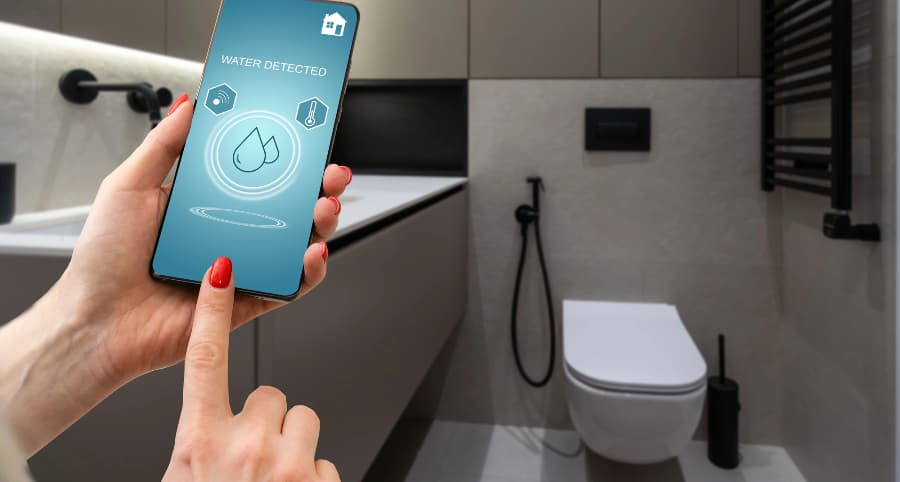How does a water sensor work and why install one with your St. Paul smart home?

One minor leak in your home can lead to big issues and thousands of dollars in damage. You need to defend against this threat; thankfully, there’s a straightforward way to accomplish this. A water sensor is a simple, effective, and affordable solution. Explore how they work and why you might incorporate water sensors into your St. Paul smart home.
How water sensors safeguard St. Paul properties
Water penetrates homes in numerous ways, whether from an appliance breakdown, plumbing issue, weather-related event, or simple human error. No matter how it occurs, you must know right away, and this is how water sensors help. But how exactly do they work?
Many water sensors are conductive and function with corresponding electrodes. When water comes in contact with the electrodes, an electrical link is created, triggering your alarm. You’ll also come across capacitive sensors that release an electrical field. Your alarm triggers when water contacts the conductive surfaces of these components and disrupts the field. Optical sensors utilizing infrared LED light are another possibility.
Some water sensors give you more
A few advanced water sensors provide even more protection as they use incorporated temperature sensors. This is a smart way to prevent frozen pipes. If there’s an extreme decrease in temperature, you’ll be notified right away. Taking action before pipes burst will protect you from water infiltration and exorbitant repair costs.
Why integrate water sensors into your St. Paul smart home?
When water problems occur, you need to be notified immediately. You can reach this goal by connecting water sensors to your smart home. Whether you’re there to hear the alarm or not, you’ll be sent an immediate update on your mobile device. In addition, your 24/7 monitoring specialists will be alerted. Each second counts in a water emergency to control the destruction and interruption to your family.
Where should you place water sensors?
Any location susceptible to an influx of water is an ideal place for water sensors. Put them in these areas:
- Bathrooms: Place behind toilets or next to bathtubs.
- Basements: Water frequently seeps into lower floors through leaky walls or due to excess rain or malfunctioning sump pumps.
- Near water heaters or appliances: Any water-using appliance might leak at some point.
- Below sinks: Water sensors are perfect for detecting leaky pipes in place not easy to see.
- Attics: Identify roof leaks early and prevent costly repairs.
Install water sensors with your Vivint smart home
Give your home the comprehensive protection it deserves with innovative tools from Vivint. Our water sensors in St. Paul connect to your Vivint smartphone app to send you automatic updates any time your alarm activates. You also enjoy integrated temperature sensors to prevent pipe freezing. Explore the smart home devices available in St. Paul by calling (651) 240-6686 today.
